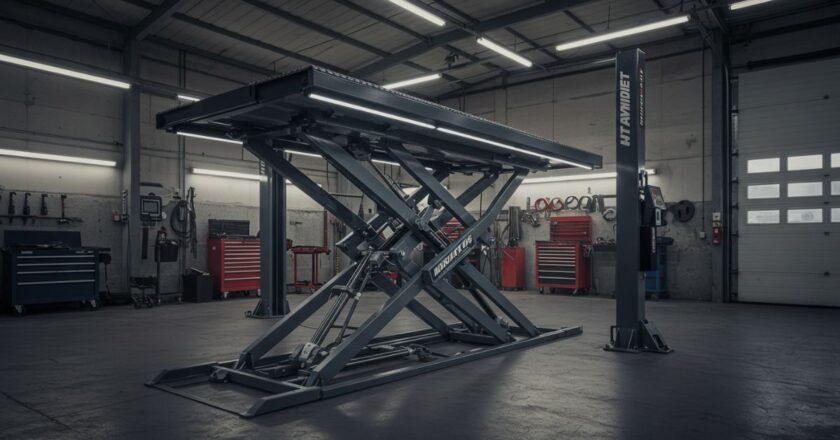SFM (Source Filmmaker) is a powerful tool for creating animations using assets from the Source engine. Whether you’re a beginner or a seasoned animator, understanding the process of compiling models and animations is essential for your work. In this guide, we will break down everything you need to know about the SFM compile process, from preparing your models to ensuring that your animations are flawless.
Introduction to SFM Compile
SFM compiles 3D models and animations into a format compatible with Source Filmmaker. It involves exporting models from a 3D application like Blender or Maya and then compiling them into a file format that can be used in SFM. The result is a model or animation that can be fully manipulated in the Source engine.
Preparing Your Models for Compilation
They must be adequately prepared before you can compile your models and animations. This includes ensuring your models are in the correct format and that all textures, materials, and rigs are correctly set up.
Check Model Format Compatibility
The first step in preparing your model is ensuring it is compatible with SFM. Most models should be in the .mdl format, standard for Source engine assets. If your model is in another format (such as .fbx or .obj), you must convert it using a compatible tool.
If you need extra budget to avail these tools, you can take out a loan from a legal money lender Singapore or the country you live in.
Setting Up Textures and Materials
Textures are crucial for making your model appear realistic. Ensure all texture files are linked correctly in the 3D modelling software and double-check that the material properties (such as bump maps, specular maps, and normal maps) are set up correctly.
Rigging the Model for Animation
If your model is intended for animation, it must be adequately rigged. This involves creating a skeleton structure that allows it to be posed and animated. Using a tool like Blender or Maya, ensure the bones are placed correctly for smooth movement.
Step-by-Step Guide to Compiling Models and Animations in SFM
Once your model is ready, the next step is to compile it. Here’s a step-by-step process to help you through it.
Exporting Models
The first thing you’ll need to do is export your model from your 3D application. For Blender, this usually means exporting to the .smd or .fbx file format. These formats are compatible with the Source engine. Once exported, you can import the file into Crowbar (a popular tool for compiling Source engine models).
Setting Up Materials
In SFM, models are associated with materials that define their appearance. You must set up the material files (.vmt) for your model. These files tell the Source engine how to display textures, how shiny or reflective a surface is, and how light interacts with the material. Ensure that your material files are correctly linked to your model during compilation.
Creating Animation Sequences
After compiling your models, you’ll want to animate them. SFM supports the creation of keyframe-based animations. You’ll need to export your animation data (usually as a .smd or .dmx file) and then import it into SFM. You can refine your animation by adjusting keyframes, poses, and transitions.
Common Issues During SFM Compilation
Even experienced animators can run into issues when compiling their models and animations. Here are a few common problems and how to fix them.
Fixing Texture Errors
One of the most common issues when compiling models for SFM is texture errors. This could manifest as missing textures or incorrect textures being applied. Double-check that the texture files are in the correct directory and that the .vmt files are correctly configured.
Resolving Model Rigging Problems
If your model doesn’t animate as expected, it could be due to rigging issues. Check the weight painting on the model to ensure that the bones influence the right areas. Also, ensure that there are no conflicting bone names or missing bones.
Optimizing Your Compiled Models and Animations
Once your models and animations are compiled, you may need to optimize them for performance. High-poly models can slow down the SFM timeline, making it difficult to work efficiently.
Simplifying Meshes
Reduce the polygon count of your models to improve performance. This can be done by decimating the mesh or simplifying complex geometry without sacrificing too much visual detail.
Reducing Texture Size
Large textures can cause SFM to lag. Consider compressing textures or using lower-resolution versions where possible. This will help keep the project running smoothly while maintaining high detail.
Best Practices for Efficient SFM Compiling
To streamline the compilation process and avoid unnecessary headaches, follow these best practices:
- Organize Your Assets: Keep your models, textures, and animations organized in clear folders to avoid confusion during compilation.
- Use Proper Naming Conventions: Name your files consistently to help with navigation and troubleshooting later.
- Check for Errors Early: Use tools like Crowbar to check for errors before starting the animation process.
- Backup Files Regularly: Always create backups of your project files, especially when making significant changes to your models or animations.
Frequently Asked Questions (FAQs)
What is the SFM compile process?
The SFM compile process converts 3D models and animations into a format for Source Filmmaker. This involves exporting models from 3D applications, setting up materials, and creating animation sequences.
How do I fix texture errors during SFM compile?
Ensure all texture files are appropriately linked to the model and the material files (.vmt) are correctly configured. If textures are missing, recheck their directories and paths.
Can I use animations from other software in SFM?
You can export animations from other software (such as Blender or Maya) into formats compatible with Source Filmmaker, like .smd or .dmx, and then import them into SFM.
How do I optimize models for SFM?
Simplify meshes, reduce texture size, and avoid using high-poly models whenever possible. This will improve performance in SFM and prevent lag during animations.
What tools do I need to compile models for SFM?
You will need a model compilation tool such as Crowbar. It allows you to compile models and animations into formats compatible with the Source engine.

Zoe Rae is a dynamic writer at SpinUpBusiness.com, where she covers a broad range of topics from business strategies to lifestyle, technology, and more. With a keen eye for detail and a passion for making complex ideas simple, Zoe crafts content that informs, engages, and inspires her readers.



